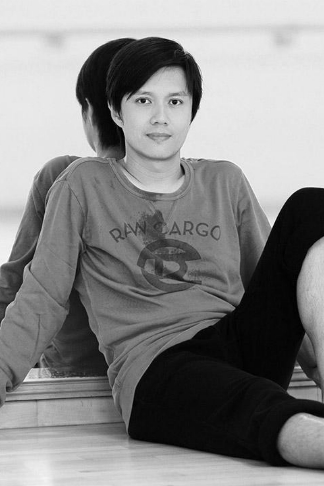Peter Gn
Dance Artist
Dance
The Trinity Laban journey opened my mind and vision to new artistic and collaborative possibilities, and nothing is more powerful to an artist than self-discovery.

My best experience was in the form of preparing for and staging my final Independent Project, where I worked with nine dancers and explored an area of great interest to me. In the end, it was not just the joy and satisfaction of seeing my own work staged, but the warm friendship forged with the dancers that really made me feel heartened, encouraged and rewarded. The Trinity Laban experience was really life-changing, all in all.
Studying at Trinity Laban helped me examine my practice, and pushed me to new territories as choreographer. Prior to this experience I was always making work in an almost formulaic way, which I had thought was the best way. Now when making work I see tremendous value in multidisciplinary collaborations, tapping into dancer expertise and simply being open to evolving or new possibilities. I have since realised that as choreographer, I do not need to be an autocrat fixated on a specific method, nor do I need ever to be a repository of all know-how. This, to me, is liberating.
My favourite experience as choreographer was seeing six dancers and a harpist perform my work, “Splinter’d” at the closing concert of CoLab 2014 in the Laban Theatre. The performance came at the end of a one-week intensive process I led the performers in, where we delved into the topic of dancer presence, and explored the synergistic possibilities between dance and music. Together with the dancers and an electronic harpist from the music faculty, we developed lots of interesting music and movement material, which I then wove carefully into a complete 20-minute work. This was by no means easy, but I was encouraged by the level of commitment that the dancers and musician showed throughout the entire process – they kept going despite the challenges and eventually were rewarded with rousing applause at the end of their performance. I was tremendously proud of them, and happy with my own breakthrough too as choreographer. It was a memorable performance also because it was the culmination of a long process of generating material, then editing and polishing it. I could not have done this alone and that was the beauty of the process – there was a leader but everyone was a contributor.
CoLab gave me the chance to try what I had never done in my own country, namely staging a dance performance with live music accompaniment. In this case, the music was not merely a passive ‘accompaniment’; it was both ‘live’ and organic at the same time – a living, breathing animal that fed off the movements and energy of the dancers. I learnt that live music and dance are disciplines that can and should share the stage. These need not exist as separate entities, and indeed, when put together in one performance, the outcomes can be amazing.
The diverse and international environment widened my worldview. Besides enabling me to appreciate and understand dance choreography as perceived and practised in other countries, it challenged some of my long held assumptions. I feel my practice was enhanced in no small measure by the mix of different viewpoints. I made many friends from other nationalities; friends who stood by me and offered much emotional and moral support.
I am proud to be a graduate of Trinity Laban. Tony Thatcher was a great mentor and friend on the MA Choreography programme, and I could not have made it through without his leadership and guidance. On many levels, Trinity Laban encouraged a practical and scholarly investigation of different aspects of our practice, where the role of both choreographer and researcher were brought together at different times of the process. I was fortunate to have worked with dedicated and talented dancers who gave their best at rehearsals. They were a joy to work with, and an even greater joy to watch because something extraordinarily magical always comes through in the way they deliver the choreography in the studio and onstage.
I have also experienced a significant shift in my aesthetic values. The Trinity Laban journey opened my mind and vision to new artistic and collaborative possibilities, and nothing is more powerful to an artist than self-discovery. When I now see a performance that moves me, I would ponder over how the dancers could have reached some depth within themselves in order to impact me as an audience member. I have come to believe that this kind of connection takes place not only when a piece of work is well-performed, but also well-embodied; with a keen sense of presence revealed and apprehended. In summation, dancing itself is wonderful, but there is something even more meaningful and significant in sharing the journey with others as a way of deepening our relationship with the world.
My final project, more than merely about examining the complexities of a phenomenon that is always complicated and layered, was a bridge that connected me as the student I was to the kind of artist, practitioner and educator I aspire to be. I came to Trinity Laban to further professionally develop myself, and rediscover and refine my artistic voice. Having completed this process and graduated, I feel keenly inspired to continue to interrogate, experience, and explore the myriad possibilities of the dancing body. I am now in a much better position as dance practitioner, facilitator, and mentor in the field of professional dance.
By challenging me to examine, interrogate and reframe my past practice and habitual methods for making work, the Trinity Laban experience opened my mind and vision to new artistic and collaborative possibilities in this specialist field.
